Before Rub ‘n Restore, Inc. we were Vinyl Ladies, repairing leather car seats and auto interiors for dealerships and body shops across Southern California. The auto industry taught us many tricks about leather and vinyl repair, chiefly among them, that you don’t need to pay a professional.
Take Brianne and her Hyundai, pictured below. A $300 detailing did not rejuvenate the leather seats, but our standard Beige conditioning color did.
Bill’s Silverado was in rough shape but by no means a goner. He repaired this large hole in his leather car seats with a subpatch kit and our flexible filler putty. Our Taupe wasn’t a flawless match, so he sent a sample to have a Custom Color formulated.
Brian restored this leather gear shift knob with our standard Black, which is a universal color in auto interiors.
Will restored his Volkswagen Bug with our Marine White, Red Chili and a beautiful serape.
Mike ordered a Custom Color to restore the discolored vinyl door panels to the original aqua in his collectible Ford.
Click here to learn how to:
- repair holes,
- repair perforated leather,
- repair cracking vinyl,
- repair a cracked dash,
- repair seams,
- correct sticky leather or vinyl, and
- restore plastic components.
Rub ‘n Restore® Colors are water-based acrylics and double as a conditioning sunscreen. They’re great not only for leather car seats, but also exterior vinyl, plastic, and rubber—everything from convertible tops and tonneau covers to bedliners, bumpers, and trim. Do consider a heavier urethane or aerosol coating to change the color of an auto interior.
Want a little guidance repairing or restoring your leather car seats? Order a consultation with the second generation Vinyl Lady. Or put the pedal to the metal.
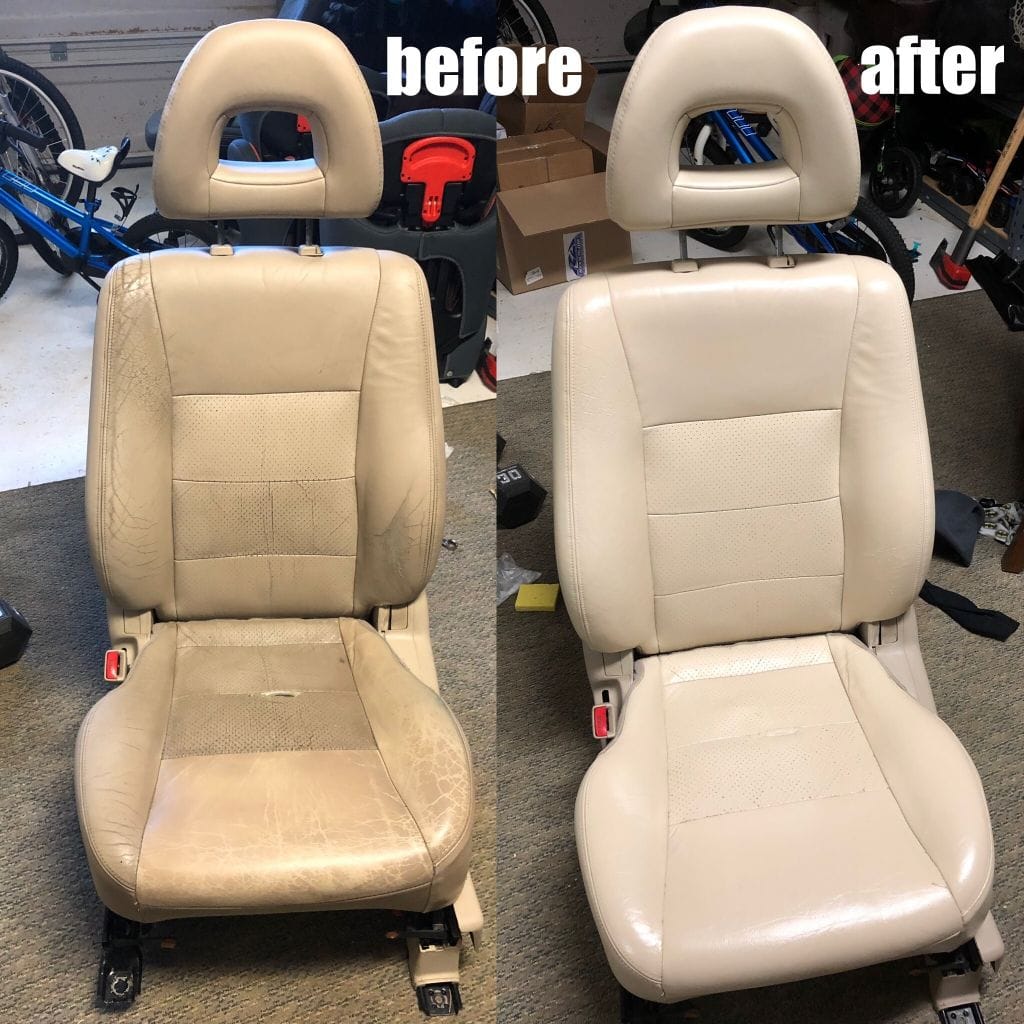
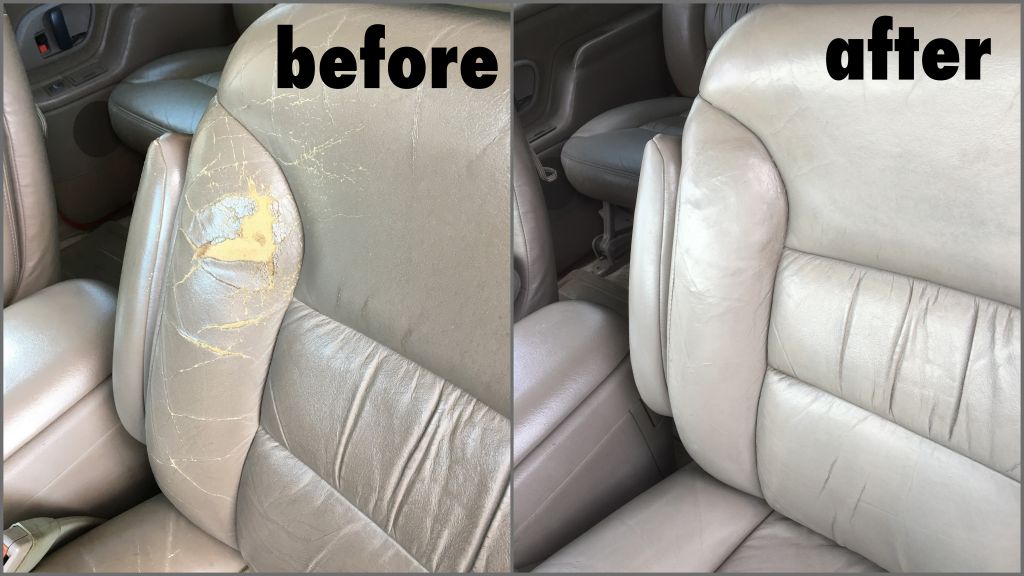
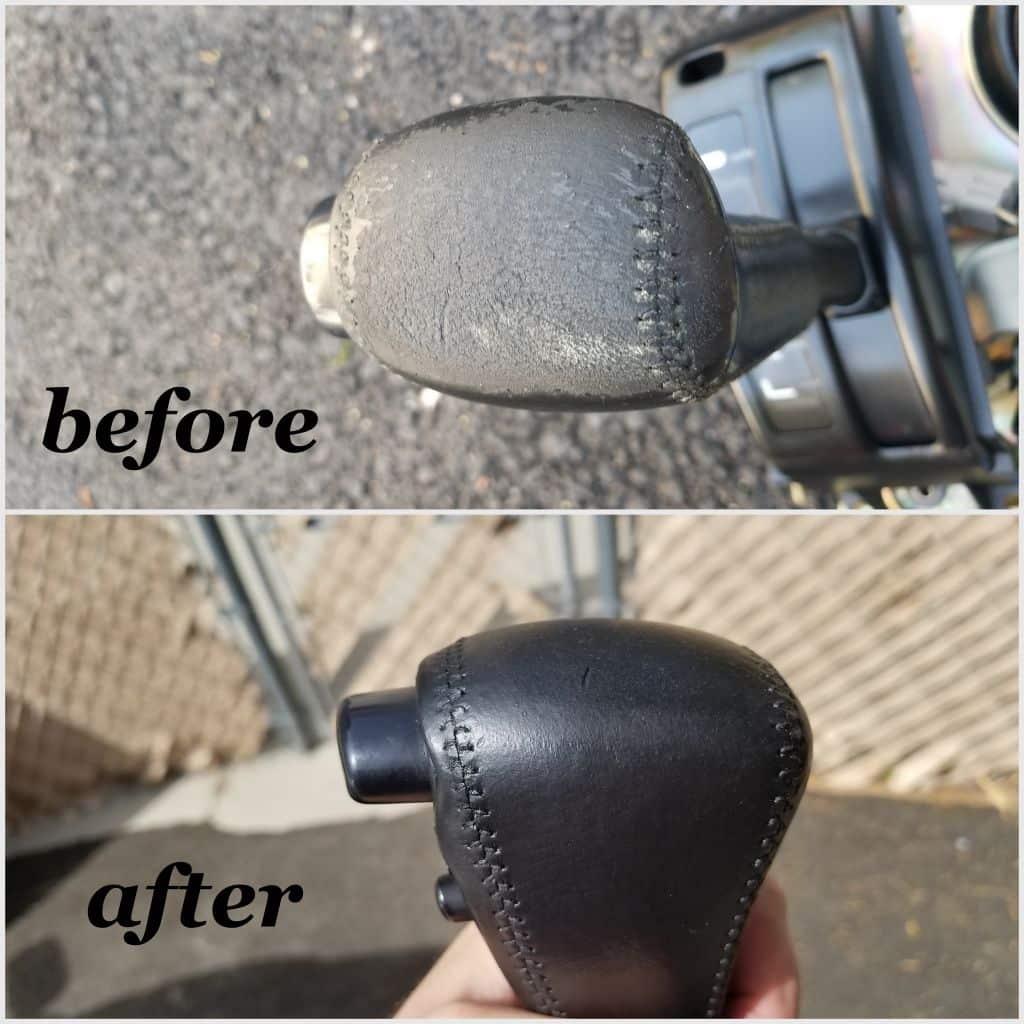
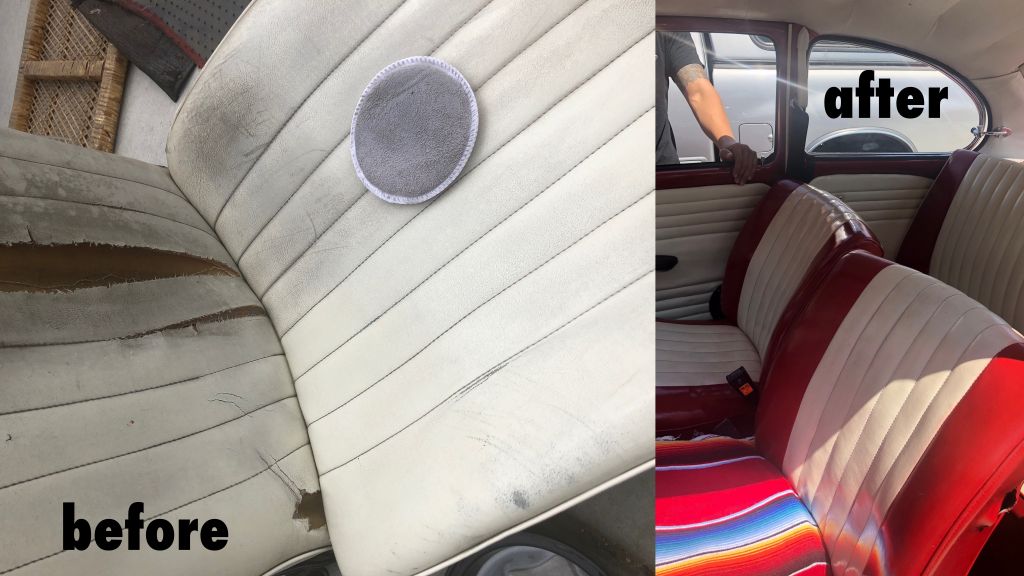
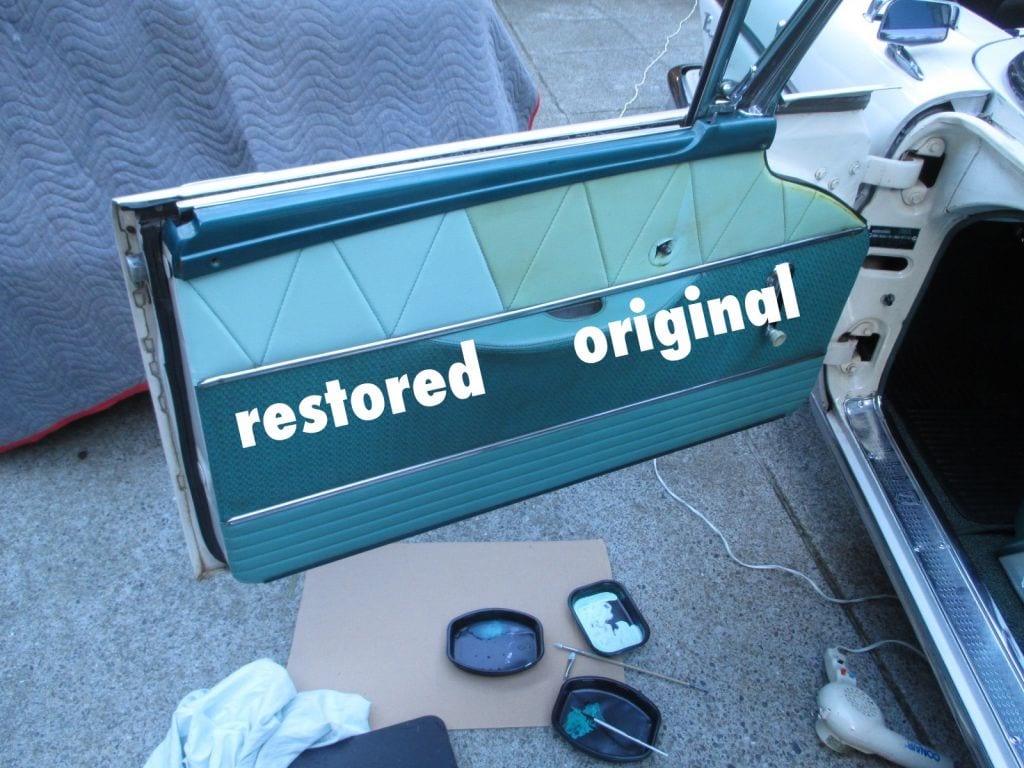
So,… My steering wheel doesn’t need repair just a recoating of a portion of the steering wheel I think got too much hand sanitizer in or something and the leather to coat feels home or something. Would I be able to just passing a later if this over it?
The alcohol in the hand sanitizer may have damaged the finish… or perhaps moisturizing chemicals.
Gently sand any unevenness with 500 grit wet or dry sandpaper, and wipe down with rubbing alcohol. So long as you can’t feel the damage, our finish will correct the rest. Black is universal. Other colors might require customization.
My 1993 volvos leather steering wheel has worn down to the plastic in a few spots…can I use filler tho build it up again ? Many thanks! Bill
I would try the method detailed in this video, not the Soft Filler used for seat repairs.
Wonderful site!
Similar question to Bill Boyd’s, posted here on 29 July 2020: How would you advise addressing significant deteriorization of the leather wrap on a steering wheel? A full quadrant of the wheel is without finish and fully reveals the interior of the wrap material (leather, according to the vehicle manufacturer). I wonder if too much material is missing to successfully use the sandpaper and glue method I watched Lesandre apply to scratched and gouged leather on a steering wheel. I could send a picture to better allow you to assess the problem.
Thanks for emailing the photo directly. We’ve never seen such extensive damage on a leather steering wheel. Must be an inferior finish, perhaps damaged by lotion, body products, or oil.
Repairing with Soft Filler will be tedious and also not as stable over time. We suggest:
1) Clean with alcohol.
2) Primer the worn areas with our Clear Prep+Finish. Let dry.
3) Gently sand with 220-500 grit sandpapers.
4) Repeat steps 2-3 if desired. Tack down little flaps with a tiny bead of super glue. Use the uper glue and baking soda epoxy method in the video to repair gouges.
5) Apply a matching color.
6) You can repeat steps 3-5 as needed without having to strip off the color.
7) Add Clear alone for shiny topcoat or mix with color to make a more subdued satin finish (we call this a glaze) which will blend well to undamaged areas.
Wheel restoration service for a 2006 Mazda MX5 Miata. Pricing and process time. Thanks
You’ll need a Custom Color ($60 matching and 8 oz. minimum $48) unless it’s black, in which case our smallest 2 oz. is plenty. Questions about application are answered in the our free how-to resources and videos. Please submit an evaluation if you want us to point you to the specific articles and tailor a solution.
I am looking to change the Interior color from tan to cinnamon/tan in my ‘04 F150. Can you help me find this shade?
That would probably require customization, but we don’t recommend color changing auto interiors with our acrylic system. See if SEM has that color code in an aerosol paint.
2012 Lexus RX-450h, leather is worn off half drivers seat,
Sounds like a job for filler and a Custom Color. If the substrate foam is worn also, might be better off replacing or reupholstering. We can advise you better if you submit photos and complete the evaluation.
My cat left scratches on the dashboard of my 2017 Laramie 3500. Although I can feel the scratches there is no color change so I’m assuming the scratches didn’t go all the way through the leather.
What do you recommend to repair the damage? Also, could you recommend the pin holes made in the side of the passenger seat used as a scratching post?
Thank you!
For help with this unusual damage to an auto interior, please submit clear photos and pay for our consultation service here.